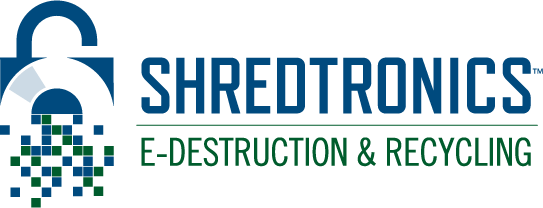
How Does Electronics Recycling Work?
Electronic waste (e-waste) is the fastest growing waste stream in the world. As technology advances, the lifespan of our electronics is getting shorter, creating a dramatic increase in e-waste. It is estimated that only 10 to 20 percent of e-waste is recycled. The rest ends up in landfills, incinerators, or is illegally exported to other countries.
Electronics contain toxic substances that need to be disposed of safely and properly. When devices are broken down or incinerated incorrectly, they can leak and contaminate the environment. The chemicals seep into the ground and release into the atmosphere. This poisons the soil, water, and air for nearby communities and causes a slew of dangerous environmental and health consequences.
Electronics recycling carefully disposes of your electronic devices and recovers the reusable materials to be used in the creation of new products.
Common Types of E-waste
E-waste is an all-encompassing term to describe discarded electrical equipment that has come to the end of its useful life. Typical types of e-waste are frequently replaced electronics such as cell phones, TVs, computers, laptops, and tablets.
The good news is nearly all e-waste is recyclable. Working devices can be refurbished and resold, while others can be broken down and separated by material. Plastic, glass, and precious metals can be salvaged and reused. According to the EPA, for every 1 million cells phones recycled, 35 thousand pounds of copper, 772 pounds of silver, 75 pounds of gold, and 33 pounds of palladium can be recovered.
The Recycling Process
The recycling process is complex because it varies by device, materials, and technology. Electronics contain harmful toxins and should only be handled by trained professionals. Here is an overview of how the process works:
- Collection: Recycling companies will collect your devices with a secure pick up service or you can drop off your devices at a local recycling center.
- Sorting: Your electronics will be manually sorted and hazardous components will be removed.
- Shredding: Devices will be put through a shredder to facilitate the separation of materials.
- Separation: Magnets will collect iron and steel, while mechanical processing separates aluminum, copper, and other metals. Plastic and glass will be separated by water.
- Preparation: Raw materials will be prepared for secondary recyclers or sent to manufacturers to be used in the production of other products.
Why is Electronics Recycling Important?
You are well aware of the negative effects chemicals like lead, mercury, and cadmium have on the environment and human health. These toxins have lethal repercussions for the atmosphere, wildlife, and people working and living near landfills.
What you might not know, is that e-waste is routinely exported to developing countries for inexpensive, improper recycling. The laborers in these countries work in unsafe and unregulated conditions to collect raw materials to sell. They spend their days touching and inhaling toxic materials and chemicals causing serious health damage to themselves and those nearby.
By recycling your electronics you will not only be helping to conserve natural resources and energy, but you will be protecting the planet and people of the world from the damage caused by improper disposal of e-waste. It is important to consider the very serious ramifications of throwing away your old electronics.
Get Free Quotes on Electronics Recycling Near You
If you are in need of electronics recycling services, ShredTronics is here to help. We specialize in recycling solutions that are convenient and reliable. Contact us at (844) 648-4908 to begin your recycling project today. Within minutes, we will send you free quotes from local recycling providers.
